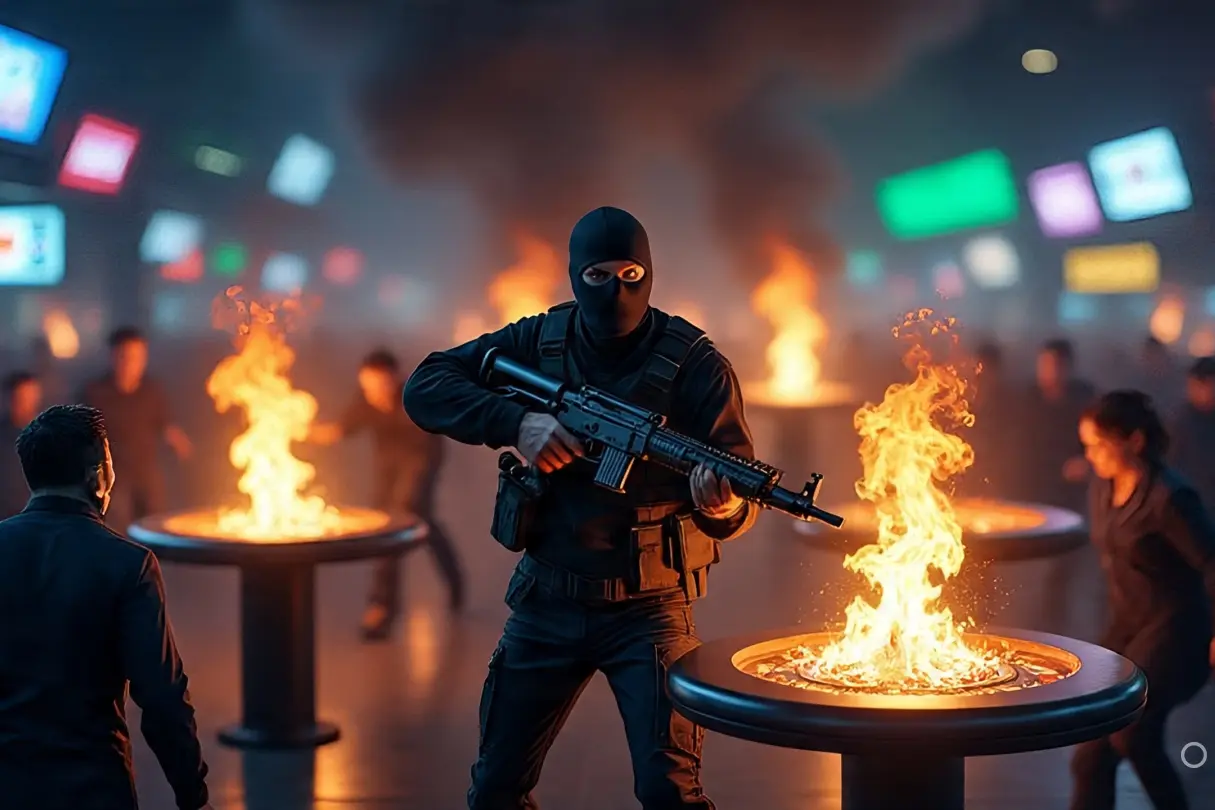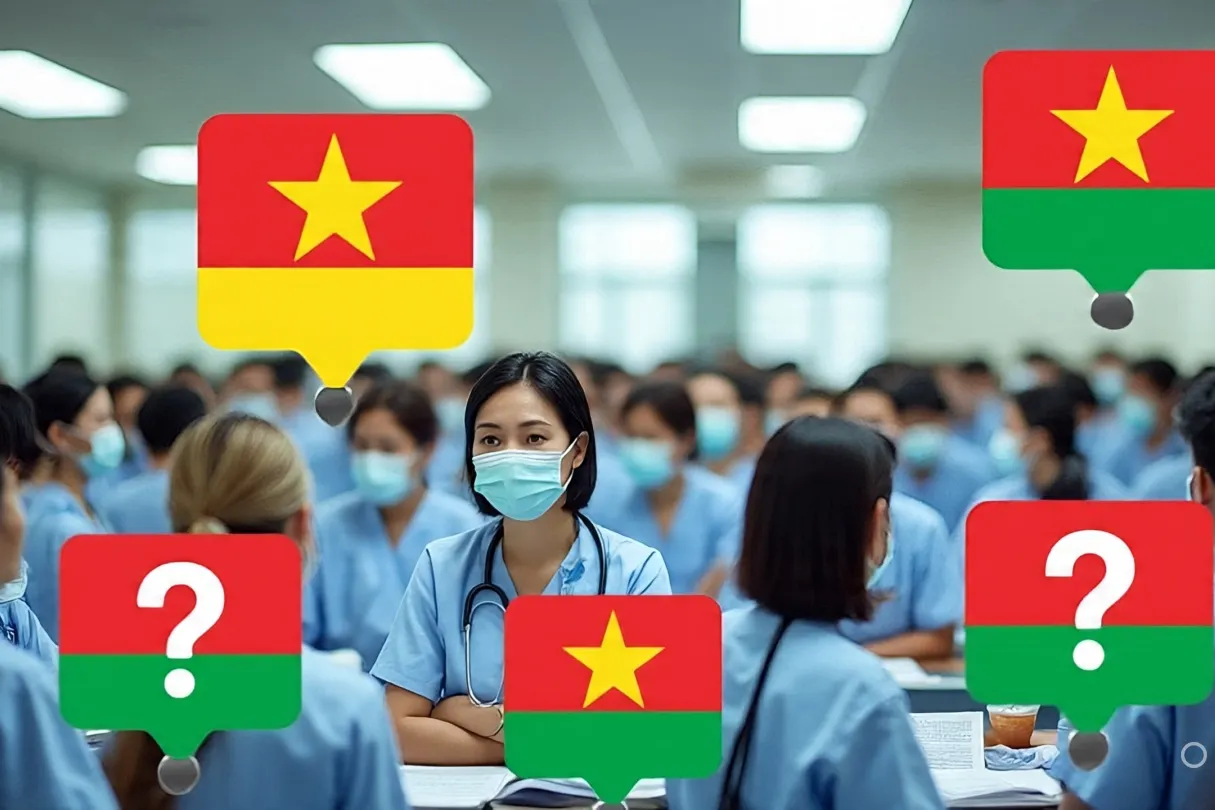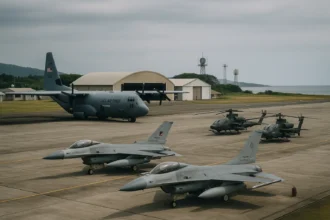On the night of June 1, 2017, a gray BMW sped through the streets of Paco, Manila. Inside were three men engaged in a tense conversation: Elmer Mitra Jr., a lawyer; Alvin Cruzin, a former Manila police officer and casino financier; and Jessie Javier Carlos, a dismissed employee of the Department of Finance known for his gambling addiction.
Carlos had been fired for failing to disclose his assets—a red flag in a country plagued by corruption. That night, the tension in the car escalated. As the vehicle turned onto Perez Street, Carlos pulled a 9mm pistol and shot Mitra in the head. Gunfire erupted inside the car. Witnesses saw one man crawl from the back seat and vanish into the night.
Arrival at Resorts World Manila 🏨🎲
At around 12:05 a.m. on June 2, a wounded Carlos limped from a taxi and entered Resorts World Manila. He was dressed in all black and carried a large bag. Inside were an M4A3 rifle and a container of gasoline.
Security footage shows Carlos heading straight for the elevators. Two women in the lift with him sensed something was off. He wore a mask as he exited on the casino floor.
The First Shots Fired 🔫😨
Grace, an unarmed female guard at the entrance, stood alone. Carlos bypassed the metal detector and immediately opened fire. Panic spread. Screams echoed as guests and staff rushed for exits, many shouting “ISIS” and “terrorists,” triggering fears of a larger coordinated attack.
Over 12,000 people were evacuated. But not all areas handled the panic well. Chaos and stampedes left many injured. Others hid in comfort rooms and storage closets, some never to make it out alive.
Fire and Chaos 🔥🧨
Carlos stormed the gaming floor, firing into the ceiling and monitors. He doused gaming tables in gasoline and lit them on fire. Then he tossed his bag—filled with ammunition—into the flames, creating explosions that mimicked active gunfire. This misled many into thinking there were multiple attackers.
In the slot machine area, Carlos set more fires. By 12:18 a.m., he had forced his way into the casino’s secured area, where he found not cash—but millions in chips. He grabbed ₱113.1 million (approx. $2.3 million) in gaming chips and tried to flee.
A System Failure 🎥🚫
Outside, the police had already arrived. But there was a major obstacle: the CCTV monitoring room was abandoned. Without eyes on the suspect, the police couldn’t pinpoint his location.
As Carlos wandered the building in confusion, police attempted to locate him manually. Eventually, a security guard heard faint footsteps. Carlos, wounded, fled to the Maxims Hotel—part of the Resorts World complex—and forced his way into Room 510.
Final Moments in Room 510 🏨🧯
At 1:45 a.m., police prepared to breach the hotel room. They entered to find Jessie Carlos dead—burned, with a self-inflicted gunshot wound to the head. Before killing himself, Carlos had doused himself in gasoline and set fire to the room, trying to barricade it from entry.
The Real Killers: Smoke and Panic 🌀💨
Though Carlos never shot anyone directly, 37 people lost their lives. They suffocated in bathrooms and backrooms where they’d hidden, trapped by the smoke from the fires Carlos had set.
Many had stayed hidden, terrified by the chaos and false reports of multiple gunmen. By the time responders reached them, it was too late.
Unanswered Questions & Accountability ❓👥
The aftermath revealed systemic failures:
- Why was there only one unarmed guard at the casino entrance?
- Why was the CCTV monitoring room unmanned?
- Why wasn’t Carlos flagged earlier—especially after being banned from casinos months before?
Although some speculated the attack was linked to terrorism—due to its timing with the Marawi siege—officials repeatedly confirmed Carlos acted alone and was motivated by debt and desperation.
One Man, Many Failures 🕳️⚖️
What triggered the car shooting earlier that night? What truly pushed Carlos over the edge? We may never know. But this wasn’t just one man’s crime. It was a cascading failure—from security lapses to broken systems—that allowed tragedy to unfold.
The 2017 Resorts World Manila attack should have been preventable. Instead, it became a case study in what happens when warnings are ignored, systems break down, and fear takes over.




